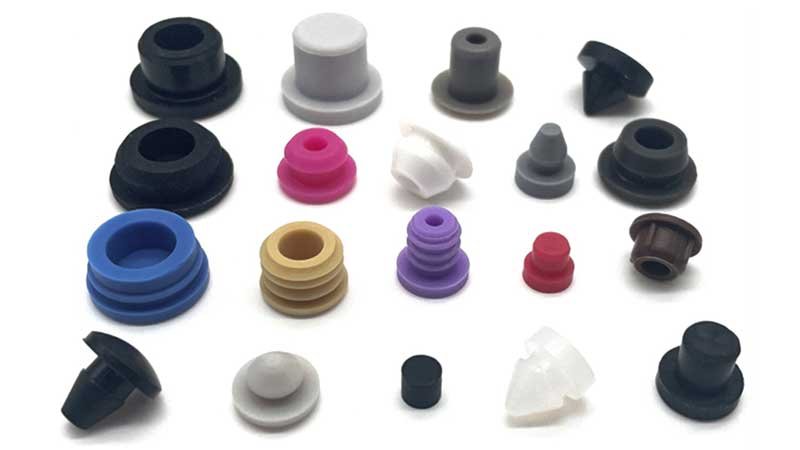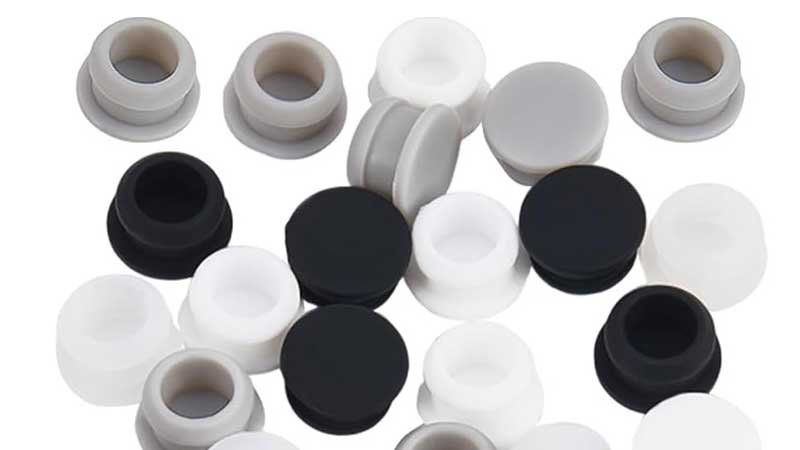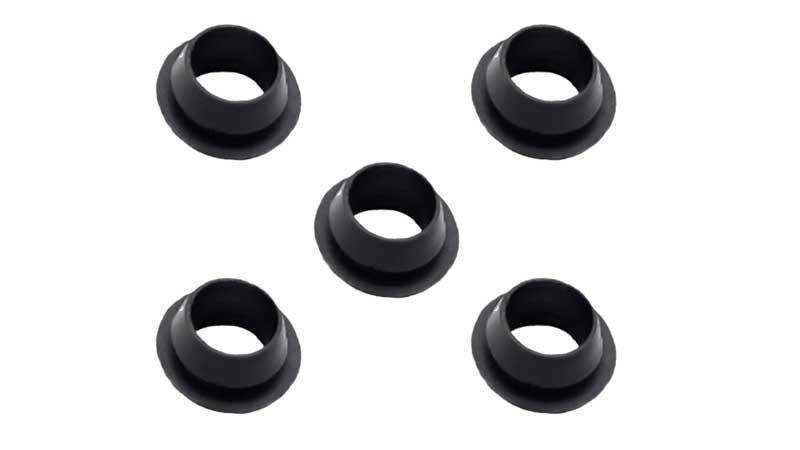You may have seen a small yet essential part called a silicone grommet in electronic devices, automotive components, home appliances, or even medical equipment. What exactly does it do? This article will give you a clear and detailed explanation.

What Are Silicone Grommets?
A silicone grommet is a ring-shaped component with a hole in the center, usually installed in the openings of metal or plastic panels. Its main purposes are protection, sealing, and cushioning. The key functions include:
- Preventing cables or tubes from wearing out due to friction against the hole edges.
- Providing sealing, waterproofing, and dust resistance.
- Reducing vibration and noise to improve structural stability.
- Offering electrical insulation for safety.
For example, in electronic products, silicone grommets are often placed at power cord outlets to prevent the wire from being cut by sharp metal edges.
In automobiles, they are used in engine compartments or door gaps to reduce vibration and improve sealing.
In medical devices, they serve as sealing components at catheter connections to maintain airtight and sterile conditions.
Why Use Silicone Material?
Silicone is considered an ideal material for making grommets because of its well-balanced performance. It offers excellent temperature resistance and stays flexible and stable within a wide range from -60°C to +250°C. Its chemical structure provides strong resistance to aging, UV rays, and ozone, so the material does not harden or crack easily.
Silicone also has outstanding electrical insulation. This makes it widely used in electronic and electrical products. Depending on the application, silicone can be formulated as food-grade, medical-grade, or industrial-grade material.

The table below compares silicone with other common materials:
| Property | Silicone | EPDM Rubber | PVC Plastic |
| Working Temperature Range | -60°C ~ +250°C | -30°C ~ +120°C | -10°C ~ +80°C |
| Aging Resistance | Excellent | Average | Poor |
| Elasticity | High | Medium | Low |
| Electrical Insulation | Excellent | Good | Average |
| Environmental & Safety Performance | Non-toxic and odorless | Limited | Contains additives |
What Are the Common Types of Silicone Grommets?
Silicone grommets come in many shapes and designs to suit different applications. The most common types include:
- Standard Round Grommet: The most widely used type, suitable for cable holes and mechanical openings.
- Blind Grommet: Designed with no central hole, ideal for sealing unused or reserve openings.
- Slit Grommet: Features a side slit, making it easier to install cables after assembly.
- Step Grommet: Designed for multi-purpose installations where hole sizes may vary.
- Flat or Recessed Grommet: Often used for flat surface sealing or decorative purposes.
Each design meets different assembly and protection needs. For instance, waterproof grommets are often used in outdoor equipment, while vibration-damping grommets are preferred in automotive and mechanical systems.

What Are the Application Areas of Silicone Grommets?
Silicone grommets have a wide range of applications across industries that require cable protection, sealing, or vibration cushioning. Their protective capabilities stem from the elasticity, flexibility, and environmental resistance of silicone, combined with thoughtful grommet design.
- In the electronics industry, silicone grommets are used in power outlets, signal line interfaces, and device housing edges. The soft ring structure cushions wires against metal edges, reducing friction and wear. Silicone’s insulation also prevents short circuits or electrical leakage, ensuring long-term stable operation of electronic components.
- In the automotive sector, grommets are installed in doors, chassis, and engine compartments. Their elasticity absorbs vibrations and shocks during driving, protecting wiring and components from damage. The sealing function blocks dust and moisture, extending the lifespan of vehicle parts.
- In household appliances such as coffee machines, washing machines, microwaves, and ovens, silicone grommets combine flexibility with high-temperature resistance. They fit tightly at device interfaces, preventing steam, liquids, or dust from entering. Their durability under repeated heat cycles ensures long-lasting sealing performance.
- In medical equipment, silicone grommets are used at catheter interfaces and instrument seals. Flexibility ensures tight contact, preventing leaks or air ingress. High-purity silicone can withstand sterilization, is non-toxic and odorless, and meets biocompatibility standards, providing safe use in medical procedures.
- In industrial and outdoor equipment, silicone grommets maintain shape and sealing performance under high humidity, extreme temperatures, UV exposure, or dusty conditions. They form effective barriers at openings and pipes while absorbing mechanical vibrations, protecting devices for stable operation.

Conclusion
Silicone grommets have become essential sealing and protective components in modern industry and consumer products due to their stable performance, wide applicability, and excellent safety. They not only extend the lifespan of equipment but also enhance overall reliability and safety.
If you need high-quality silicone grommets, our team offers extensive expertise in material formulations and precision mold manufacturing. We skillfully apply multiple processes, including compression molding, injection, and extrusion, to provide customized solutions for your projects. Partner with us, and our professional team will help you achieve efficient production and superior products.